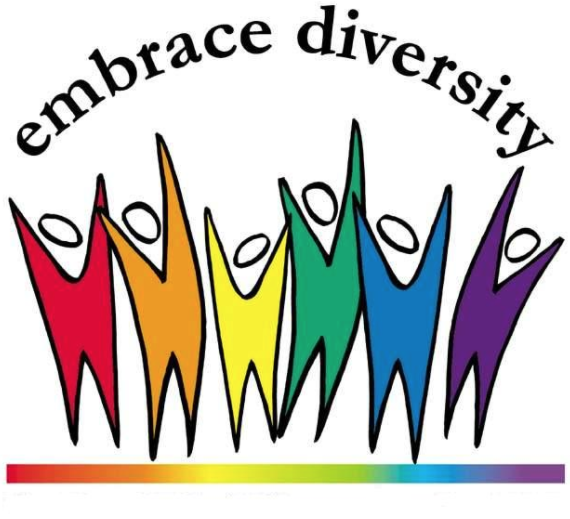
Diversity, Equity, and Inclusion (DEI in the biz) are hot topics. Businesses want to know how to recruit and retain diverse employees at every level. Churches across the spectrum from Catholics and Episcopalians to Muslims, Baptists to Jews, Presbyterians to Latter Day Saints are offering workshops encouraging inclusiveness. Nonprofits are springing up or shifting focus to empower marginalized populations including African Americans, Latinx, refugee immigrants, and members of the LGBTQ community.
Many of these groups take seriously Martin Luther King’s analysis:
“People fail to get along with each other because they fear each other. They fear each other because they don’t know each other. They don’t know each other because they have not properly communicated with each other.”
So they’re looking for ways to improve their communicating. This is why I wrote Personal Communicating and Racial Equity. (available for $12.95 at https://he.kendallhunt.com/search?search_api_views_fulltext=Personal+communicating+and+racial+equity Avoid amazon.com for this one.). It’s only 70 pages long and offers 9 steps toward what King called “proper communicating.”)
Seventy pages are more than many want to read, though, and some people don’t have time for a 10 hour workshop, so many people want something even shorter. It’s dangerous to offer a quick fix to a challenge as difficult as misunderstanding across cultures, and if you’ve only got minutes, you can best use them to understand and learn to practice curiosity and cultural humility.

They go together. Curiosity begins with an interested, inquisitive mindset. Someone being curious asks genuine questions like “I wonder what’s happening there?” or “I sure didn’t expect that! I need to figure out what’s going on.” Curiosity is powerful because it can reduce or replace defensiveness, one of the biggest obstacles to good multicultural communicating. Curiosity can also be empowering, because it helps make another person the “expert.”
Curiosity begins at home. When you want to communicate better with people different from you (“cultural Others” in the biz), begin by understanding your own cultural identifiers. What cultural features are most relevant to you–your age? gender? racial or ethnic identity? ability? class? A good way to do this is to create your own “Identity Wheel” (see p. 49 of Personal Communicating and Racial Equity, 2e–PCRE2). You draw a circle and divide it into pie-shaped pieces, with the larger pieces representing the most important parts of your cultural identity–for me it’s race, gender, and class–and the smaller ones the less important parts–for me it’s ability, age, and religion. This kind of cultural self-reflection is a crucial part of becoming multiculturally competent.
The next step is to be genuinely curious about what’s most important to people who are different from you. You can do this by asking genuine questions like “What are your main goals?” “Who would you like to include?” and “What do you want to have happen?” Avoid questions that begin with “Why,” because they can generate defensiveness. Also avoid statements masquerading as questions like “Do you really believe that?” (which means, “I don’t believe that”) and “Won’t that create problems” (which means “I think that will create problems.”). Ask genuine and open questions and listen carefully to the responses you get.

When you’re being genuinely curious about the cultural identifiers of people different from you, you’re practicing cultural humility. Academics define cultural humility as “the ability to maintain an interpersonal stance that is other-oreinted (open to the other) in relation to aspects of cultural identity that are most important to the person.” I define it as Holding your own cultural identifiers lightly rather than tightly PCRE2, p. 54).
It can be difficult to practice cultural humility, because most of us are pretty ethnocentric. We automatically believe that the ways we’ve learned to do things are the “normal” or “best” ways. But when we pay attention to our own Identity Wheel (which visually displays our cultural commitments) and realize that everybody’s wheel is different, we can understand what we need to be culturally humble about.
Since I’m a straight white male, I need to remember that I’m seriously privileged in relation to my Black friends. Even when I’m at an NAACP function where people who look like me are in the minority, I still carry these privileges. I don’t need to feel guilty or ashamed about them, and I do need to be aware that they’re affecting what I notice and how others respond to me.
Cultural humility does not mean giving up any of my cultural identifiers. I can’t abandon my whiteness, for example, or my age. It just means (a) being aware of who I am culturally and (b) being open to and accepting of others’ differences. As a practical matter, it can mean accepting–rather than condemning–talk that is “too loud,” dress or body art that I wouldn’t wear, and anger that I don’t feel. It means staying engaged when things get challenging.

George W. Bush clearly displayed cultural humility when he spoke at the dedication of the National Museum of African American History and Culture. Bush said,
“A great nation does not hide its flaws. It faces its flaws and corrects them. This museum tells the truth that a country founded on the promise of liberty held millions in chains. That the price of our union was America’s original sin.” https://legalinsurrection.com/2016/09/george-w-bush-speaks-at-dedication-of-national-museum-of-african-american-history-and-culture/
Especially in situations of difficult cultural difference, work to practice curiosity and cultural humility.


